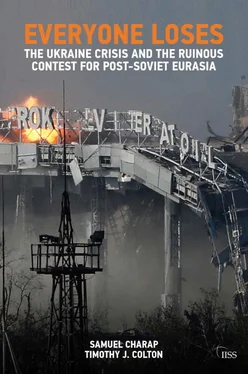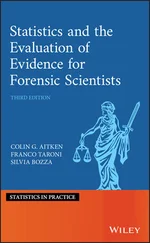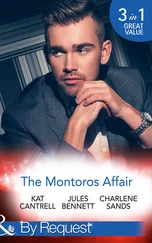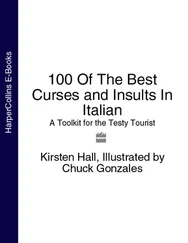Bucharest also marked the breakdown of NATO’s dual-track approach to enlargement and relations with Russia: pursuing new members while also fashioning a more wide-ranging partnership with Moscow, as enshrined in the 1997 Founding Act. The evening following the release of the declaration, Putin arrived in the Romanian capital for a scheduled NATO–Russia summit. His public comments made clear Russia’s bottom line: ‘the appearance of a powerful military bloc’ on its borders was ‘a direct threat’ to its security. ‘The claim that this process is not directed against Russia will not suffice.’ [36] ‘Zayavlenie dlya pressy i otvety na voprosy zhurnalistov po itogam zasedaniya Soveta Rossiya–NATO’, 4 April 2008, http://kremlin.ru/events/president/transcripts/24903 .
The State Duma, the lower house of the Russian parliament, was soon to pass a resolution urging the abrogation of the 1997 Russia–Ukraine treaty, which had reaffirmed Ukraine’s territorial integrity, if Kyiv received a MAP.
In remarks to the NATO leaders behind closed doors, Putin made clear that Russia still did not consider its neighbours to be real countries entitled to their own policies. Georgia, he said, was foolhardy to think that NATO membership would resolve its separatist conflicts. He also called Ukraine an artificial creation of capricious Soviet leaders. [37] Asmus, A Little War That Shook the World , p. 136.
(Putin’s characterisation, of course, was by the same token true of post-Soviet Russia, which had never existed in its current borders before 1991.)
Such statements increasingly made it taboo for Western governments to hold any discussions with Moscow about post-Soviet Eurasia. Partly this came out of the Bush administration’s (and its supporters’) peculiar reading of mid-twentieth-century diplomacy. In his maiden speech in Europe in June 2001, Bush said, ‘We will not trade away the fate of free European peoples. No more Munichs, no more Yaltas.’ [38] ‘THE PRESIDENT IN EUROPE; Bush’s Vision: “We Will Not Trade Away the Fate of Free European Peoples”’, New York Times , 16 June 2001.
He was equating the Yalta accord, signed by the Big Three at the end of the Second World War, with Munich in 1938, the archetype of a sell-out of helpless countries to odious regimes. It should be noted that this characterisation is tendentious if not ahistorical; the Red Army had occupied most of East Central Europe when the Yalta agreement was signed. [39] Moreover, the Yalta accords actually guaranteed Poland ‘free elections of governments responsive to the will of the people’, a provision, of course, which Stalin subsequently violated. See Conrad Black, ‘The Yalta Myth’, National Interest , May 2014, http://nationalinterest.org/article/the-yalta-myth-1052 .
Whatever the historical accuracy, Yalta now signified the granting of carte blanche to Stalin to impose tyrannical regimes fashioned in the Soviet image on the states of East Central Europe – a Western sin that must never be repeated. The invocation of the Yalta analogy implied that cooperation with Moscow would necessitate imposing decisions on Russia’s neighbours against their will, depriving them of democracy, independence and so on. When the East Central European states that had experienced the trauma of Yalta joined Euro-Atlantic institutions, this idea gained broader currency. But it was Putin’s words, and Russian policy broadly speaking, that crystallised that view into conventional wisdom.
Another geo-ideational conflict was brewing. Bush said in his June 2001 speech that it was not just immoral to find common ground with Russia on the regional order, as per the ‘no more Yaltas’ maxim; additionally, the president reinterpreted ‘what my father called a Europe whole and free’ as a concrete policy agenda. ‘All of Europe’s new democracies, from the Baltic to the Black Sea and all that lie between, should have the same chance for security and freedom and the same chance to join the institutions of Europe as Europe’s old democracies have.’ Suddenly, for the continent to be ‘whole and free’ (for good measure, ‘at peace’ soon became part of the trope), every country had to join the Western club. To be precise, every country save one: ‘Europe’s great institutions – NATO and the European Union – can and should build partnerships with Russia’, but not more than that. [40] Ibid.
As Russia gained seriousness of purpose about its regional-integration agenda, thus giving the In-Betweens alternative club membership options, the geo-idea of a ‘Europe whole, free and at peace’ began to collide with the other Western favourite: freedom to choose. If a country were to choose to join a Russia-led club, presumably Europe would not be whole or free, and maybe not even at peace.
A frozen conflict heats up
As the politicians huddled in Bucharest, the security situation in the South Caucasus was going downhill. In the weeks following the recognition of Kosovo’s independence, Moscow publicly reached out to the small, unrecognised breakaway entities within Georgia, South Ossetia and Abkhazia, seemingly in order to demonstrate its pique at the Kosovo decision. Between early March and mid-April, the government announced it would no longer be bound by a 1996 CIS decision limiting trade with Abkhazia; the Duma passed a non-binding resolution calling for recognition of the enclaves’ independence; and Putin issued a decree opening up greater trade, transportation and political links with both places. These steps were primarily symbolic; the CIS sanctions had never been enforced, and links between Russia and the two separatist regions had always existed. But they caused panic in Tbilisi, leading many there to assume that Russia was marching toward annexation. [41] Asmus, A Little War That Shook the World , p. 146.
The Georgian government responded by bolstering its military presence near Abkhazia and conducting more drone flights over the region. In hectic succession, a Russian MiG-29 shot down several drones, there was a rancorous UN Security Council meeting on the issue and Russia boosted its peacekeeping forces in Abkhazia. Communication had broken down, and political will to defuse the situation was absent. When the chief of the Russian general staff warned his NATO counterparts in May that there would be a war in Georgia that summer unless steps were taken to nip it in the bud, ‘NATO thought it was just standard Russian bluster and political posturing’. [42] Ibid. , p. 149.
As the summer arrived, South Ossetia became the eye of the storm, with numerous skirmishes between Georgian and separatist forces, while Russia conducted a 10,000-man military exercise just across the border, ending on 2 August. What came next has been well documented by an international fact-finding mission on the conflict. [43] ‘Independent International Fact-Finding Mission on the Conflict in Georgia Report’, September 2009, http://echr.coe.int/Documents/HUDOC_38263_08_Annexes_ENG.pdf .
Following an intensification of fighting, on the night of 7 August Saakashvili took the fateful decision to unleash an all-out assault on Tskhinvali, the South Ossetian provincial capital. The Russian peacekeepers there also came under direct attack. Russia, after being caught flat-footed, launched a massive counter-offensive, not only driving the Georgians (both armed forces and ethnic Georgian civilians) out of South Ossetia but pushing deep into Tbilisi-governed territory, gratuitously sinking several of Georgia’s naval vessels after the fighting had ended (and hauling off patrol boats as trophies), and destroying much of the hardware of the country’s ground forces. Russian forces also invaded across the administrative boundary with Abkhazia, which Georgia had not attacked, and dismantled or destroyed a number of military facilities. In five days, the war was over; Saakashvili had been routed. An estimated 500 people had been killed, and tens of thousands had been displaced. On 26 August, the recently instated Russian president, Dmitry Medvedev, recognised the independence of South Ossetia and Abkhazia.
Читать дальше











